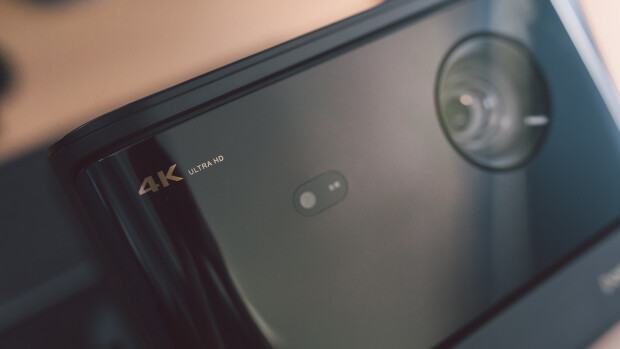
We have several missions taking off This Week in Rocket Launches but the most interesting will happen on Saturday when United Launch Alliance (ULA) launches an Atlas V carrying the CST-100 Starliner crewed test flight. Two NASA astronauts will be aboard and will head to the International Space Station (ISS).
Monday, 27 May
- Who: SpaceX
- What: Falcon 9
- When: 11:30 a.m. UTC
- Where: Florida, US
- Why: SpaceX will use a Falcon 9 to launch 23 Starlink satellites into a low Earth orbit. This batch is known as Starlink Group 6-60 – you can use this designation on apps like ISS detector to see whether these particular satellites will be making a showing in the night sky at your location. The first stage of the rocket will most likely attempt a landing ready for reuse. For those that are unaware Starlink satellites are used to beam internet down to Earth to paying Starlink customers.
Tuesday, 28 May
- Who: SpaceX
- What: Falcon 9
- When: 10:20 p.m. UTC
- Where: California, US
- Why: SpaceX will launch a European-Japanese mission called EarthCARE. As you can probably guess from the name of the satellite, the satellite will perform observations of the Earth to produce more reliable climate predictions to help produce better weather forecasts. The satellite has a service life of 3.5 years.
Wednesday, 29 May
- Who: Galactic Energy
- What: Ceres 1S
- When: 8:40 a.m. UTC
- Where: Yellow Sea
- Why: Galactic Energy will launch its Ceres 1S rocket from the Borun Jiuzhou ship carrying the Tianqi 25-28 satellites. These satellites will make up part of an Internet of Things constellation. They will help blind areas of terrestrial network coverage in use cases such as marine, environmental protection meteorological, forestry, geological, emergency, rescue and smart city industries. Once complete, the constellation shall have 38 satellites.
Thursday, 30 May
- Who: Roscosmos
- What: Soyuz 2.1a
- When: 9:42 a.m. UTC
- Where: Baikonur Cosmodrome, Kazakhstan
- Why: Roscosmos will use the Soyuz 2.1a rocket to launch the 88th Progress cargo delivery mission to the International Space Station to ensure astronauts on board have everything they need to continue their mission.
- Who: CNSA
- What: Long March 3B/E
- When: 12:13 p.m. UTC
- Where: Xichang, China
- Why: China will be using a Long March 3B/E to launch the Paksat-MM 1R communications satellite into orbit. This satellite will provide broadcasting, broadband, mobile backhaul, and VSAT connectivity services.
- Who: SpaceX
- What: Falcon 9
- When: 11:09 p.m. UTC
- Where: Florida, US
- Why: SpaceX will be launching another batch of 23 Starlink satellites this time designated as Starlink Group 6-64. Just like all the other Starlink satellites, these will join the Starlink constellation and beam internet connectivity to Earth for Starlink customers in all supported countries.
Saturday, 1 June
- Who: United Launch Alliance
- What: Atlas V
- When: 4:25 p.m. UTC
- Where: Florida, US
- Why: This mission with see ULA launch an Atlas V rocket carrying the CST-100 Starliner spacecraft on a crewed test flight to the International Space Station (ISS) as part of NASA’s commercial crew program. The two astronauts aboard this test flight will be NASA’s Barry Wilmore and Sunita Williams.
Recap
- The first launch last week was Blue Origin’s New Shepard rocket carrying a crew to the edge of space. The crew included Ed Dwight, Mason Angel, Sylvain Chiron, Kenneth L. Hess, Carol Schaller, and Gopi Thotakura.
- Following the mission, we got a clip of Ed Dwight leaving the capsule. This was a big moment for him as he was picked as NASA’s first black astronaut candidate but never got to go to space, decades on, he’s managed to get to the edge of space.
- Next up, China launched a Long March 2D rocket carrying four Beijing 3C satellites from the Shanxi Province, China. These are remote sensing satellites that will be used for land and resources management, survey of agricultural resources, ecological environment monitoring, and urban applications.
- The fourth launch was a Kuaizhou 11 carrying Wuhan 1 and three other small satellites. All of the sources managed to enter their planned orbits,
- The first SpaceX mission we had this week was a Falcon 9 carrying the NROL-146 mission for the National Reconnaissance Office. The details of this payload are classified.
- The following launch was also a SpaceX Falcon 9. This time it was carrying a batch of Starlink satellites that will beam internet back down to Earth. The first stage of the rocket performed a landing too so that it can be reused.
- A day later, SpaceX launched more Starlink satellites and landed the first stage of a Falcon 9.
- Finally, Rocket Lab used an Electron rocket to launch NASA’s PREFIRE satellite. PREFIRE stands for Polar Radiant Energy in the Far-InfraRed Experiment. The satellite will improve the understanding of how water vapour, clouds and other parts of the atmosphere trap heat.
That’s it for this week, check in next time!




















0 Comments - Add comment